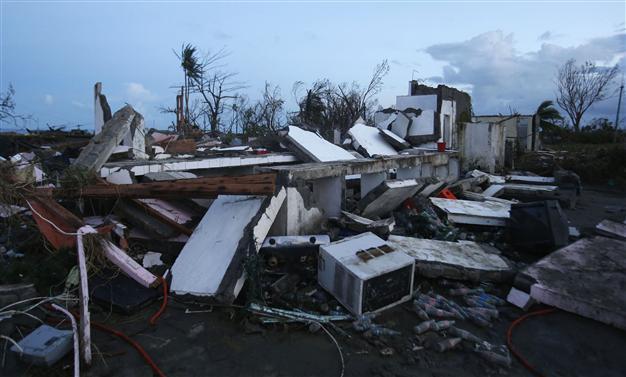Cost from disasters quadrupled in 30 years: World Bank
WARSAW - Agence France-Presse

REUTERS photo
The bill from natural and weather disasters is nearly $200 billion (150 billion euros) a year, four times higher than in the 1980s, the World Bank said on Monday.
"As the global climate continues to change, the costs and damages from more extreme weather related to a warming planet are growing," it reported on the sidelines of UN climate talks in Warsaw.
Disasters cost nearly $4 trillion (2.96 trillion euros) over the last 30 years, about two-thirds of which was due to extreme storms, floods and drought, and killed more than 2.5 million people, it said in a cost analysis.
World Bank president Jim Yong Kim said that Typhoon Haiyan, the most powerful typhoon ever to hit the Philippines, had "brought into sharp focus how climate change is intensifying the severity of extreme weather events." He said in the report: "Such tragic events show that the world can no longer afford to put off action to slow greenhouse emissions, and help countries prepare for a world of greater climate and disaster risks." The document included estimates of the cost from lives and jobs lost as well as damage to property and infrastructure.
In the 1980s, it said, the annual cost was about $50 billion, quadrupling to $200 billion per year in the last decade.
"Weather-related economic impacts are especially high in fast-growing, middle-income countries due to increasingly exposed, valuable assets," said the report.
In these economies, "the average impact of disasters equalled one percent of GDP (gross domestic product) over the six years from 2001 to 2006, 10 times higher than the average for high-income countries." Those further down the ladder of development experienced a correspondingly greater loss of GDP.
Hurricane Tomas wiped out the equivalent of 43 percent of the GDP of St Lucia in 2010.
The 2008-11 drought in the Horn of Africa, which at its peak saw 13.3 million people without enough food, caused estimated losses of $12.1 billion in Kenya alone.
The World Bank said more must be done to help vulnerable countries adapt to climate change and prepare for weather disasters.
Building disaster-resilient infrastructure and early warning systems may be costly but saves countless lives and typically yield benefits four to 36 times higher than the initial outlay.
"Cyclone Phailin which hit Odisha and Andrah Pradesh in 2013 resulted in 40 deaths after years of disaster risk prevention and preparedness, compared to the 10,000 who perished during a similar event in 1999," said the report.
While no single weather event can be blamed with certainty on climate change, scientists have long been warning of ever more extreme floods, heat-waves, cyclones and other effects of a warming planet.
There is also damage from slower onset changes -- sea level rise drowning small islands, salinisation of freshwater sources and longer, harsher droughts.
The bill is complex, deriving also from a country's preparedness to cope with disasters.
